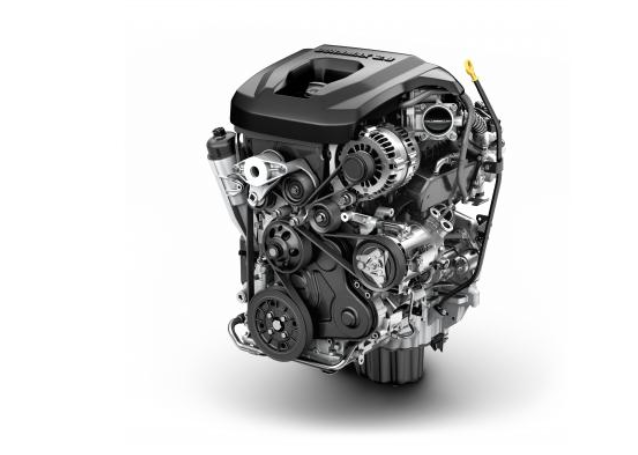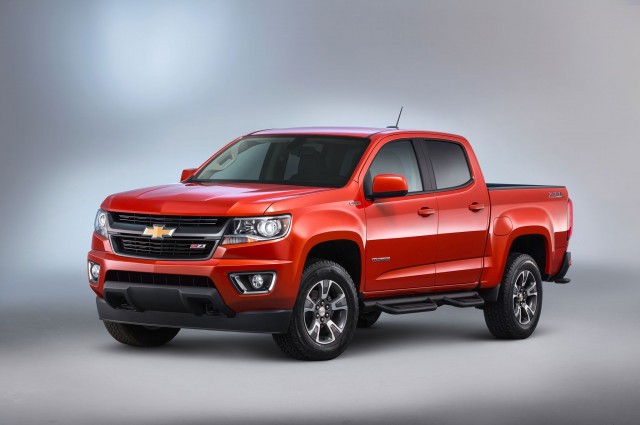America has gone green. Not in the sense that Leonardo DiCaprio is driving a Prius, or upcycling pallets into crude patio furniture has become a thing. We’re talking about the other green: envy –and why shouldn’t we be? While every city from Bangkok to Bogota seems to have an ever expanding fleet of diesel powered machines, we (in the U.S.) are often left empty handed. Thankfully, it appears that the tide has begun to shift; especially in the truck segment.
Since 2011, General Motors has been producing a variant of their potent 2.8 liter turbo-diesel Duramax engine for use in Southeast Asia and South American markets. The good news is that we will soon be receiving a U.S. spec version of this new powerplant for the 2016 Chevrolet Colorado. Yes, you read that correctly, we will be receiving a compact, diesel powered 4×4 pickup truck right here in the good ol’ U S of A.
The four cylinder Duramax is a model of contemporary design and brings with it many welcomed improvements. For forced induction duty, GM has implemented a variable geometry turbine wheel (VGT). This combines the quick spooling characteristics of a smaller turbocharger with the higher flow rate of a larger unit. The function of the VGT is controlled electronically to maximize efficiency and overall drivability across the RPM range. The VGT provides most of the benefits of a sequential turbocharger system with far less complexity.
A faster spooling turbocharger not only provides superior driveability, it also comes with the benefits of forced induction at a lower RPM. This equates to increased torque at lower engine speeds, an obvious advantage when towing. GM boasts that the little Duramax produces an impressive 330 lb/ft of torque from 1,400 – 2,900 RPM (with a max of 369 lb/ft at 2,000 RPM). These are truly respectable numbers, especially considering it propels a compact truck.
The diesel variant of the Colorado will also be fitted with an engine brake to scrub off excess speed whenever the accelerator pedal is lifted. A welcome side effect of engine braking comes in the form of reduced brake wear which saves on maintenance costs, while providing an increased margin of safety. GM has also added an interesting feature to their fleet: 4G-LTE Wifi. As of now, they are the only company providing this option. Wifi may not be useful on the remotest tracks, but will certainly prove useful when updating your travel blog on the road.
Overall, the big bow tie has put quite a bit of emphasis on Colorado sales. At the time of writing this, the Toyota Tacoma (the Colorado’s main competition) is out pacing the little truck by a sales ratio 2.5:1. It will be interesting to see if the addition of a diesel motor will have any effect on this. Perhaps if this truck sells well enough, other companies such as a VW (with their Amarok), or Ford (Ranger) might consider us worthy of other compact diesel trucks. Fingers crossed.
Powertrain Specifications
Engine: 2.8 liter turbo-diesel 4 cylinder, aluminum cylinder head, dual balance shafts
Turbocharger: VGT (Variable Geometry Turbocharger) 40 PSI max, no wastegate
Fuel: Diesel, 29,000 PSI common rail direct-injection, 16.5:1 C/R
Engine output: 181 hp @3400 RPM, 369 lb/ft torque @2000 RPM
Transmission: Hydramatic 6L50 | Centrifugal Pendulum Absorber (reduces backlash)
Transfercase: 2 speed electronic
MPG: TBA (rumoured to be in the 34 mpg range)
Towing Aids
Exhaust brake
Integrated Trailer Control
Towing capacity: TBA
Special Features
4G-LTE Wifi
8” Touchscreen headunit, touch and swipe feature
Rear vision camera
Forward Collision Alert
Lane departure warning





